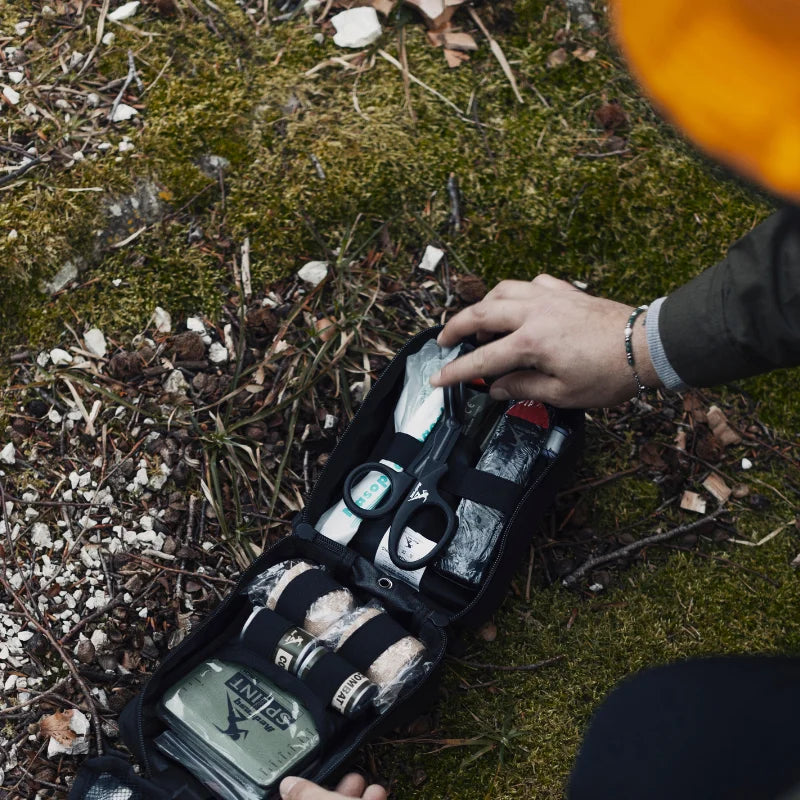In an emergency, quick access to essential medical supplies can make a life-saving difference. This is where the Individual First Aid Kit (IFAK) becomes invaluable. But what exactly does IFAK mean, and why is it crucial for personal and professional use? In this article, we’ll explore the meaning of IFAK and why it’s a must-have item for anyone involved in outdoor activities, tactical operations, or emergency preparedness.
What is an IFAK?
IFAK stands for Individual First Aid Kit, a compact and portable set of medical supplies designed to provide immediate care in the event of an injury or emergency. Unlike traditional first aid kits that are larger and intended for general use, an IFAK is specifically designed to address trauma injuries such as heavy bleeding, fractures, or airway obstructions. These kits are essential for first responders, military personnel, outdoor enthusiasts, and anyone looking to ensure they have the necessary tools for self-treatment in a critical situation.

The Importance of an IFAK
The IFAK is built with the idea that immediate intervention can prevent further injury or even death. In situations involving severe trauma, quick access to the right tools can stop bleeding, manage pain, and stabilize the individual until professional medical assistance is available. For instance, a metal tourniquet can help control severe bleeding in a matter of minutes, potentially saving a life.
IFAKs are typically designed to be small, portable, and lightweight, making them easy to carry without sacrificing the essential supplies required for trauma care. They are often packed with a med pack, which includes necessary items like bandages, antiseptic wipes, and gauze, as well as tools for more advanced procedures.
Key Components of an IFAK
While the contents of an IFAK can vary depending on its purpose and user, there are a few key items that are considered essential:
- Hemostatic Dressings: These are used to stop bleeding from traumatic injuries by promoting clotting and providing pressure.
- Trauma Shears: A pair of durable, high-quality scissors designed to cut through clothing, seatbelts, or other materials quickly and safely in an emergency.
- Tourniquets: A critical component for managing severe arterial bleeding. The metal tourniquet is often preferred for its durability and ability to apply constant pressure to the wound.
- Bandages and Gauze: These are essential for dressing wounds and preventing infection.
- Burn Dressings: If the kit is intended for environments where burns are likely (e.g., outdoor adventures, firefighting), burn dressings may be included.
Who Needs an IFAK?
IFAKs are not just for military personnel or paramedics. While they are common in tactical and combat settings, an IFAK can be useful for a wide range of individuals, including:
- Outdoor Enthusiasts: Hikers, campers, and adventurers face risks such as falls, animal bites, and accidents that could result in bleeding or other injuries.
- Sports Enthusiasts: Athletes, particularly in contact sports or extreme activities, may need quick access to trauma care in the event of injury.
- First Responders: For those in emergency medical services or volunteer organizations, having an IFAK on hand ensures they are prepared for a variety of emergency situations.
- Everyday Carry (EDC) Enthusiasts: People who are interested in preparedness and survival tactics often carry an IFAK as part of their EDC gear to ensure they are ready for any situation.
How to Use an IFAK
Using an IFAK requires knowledge and training in basic trauma care. While an IFAK contains critical supplies, it is essential to understand how to apply these items correctly. Here’s a brief overview of how some of the components are used:
- Applying a Tourniquet: When using a metal tourniquet to stop severe bleeding, place it above the injury site, tighten it until bleeding stops, and secure it. The application of a tourniquet should be followed by seeking professional medical attention immediately.
- Using Trauma Shears: Trauma shears are used to quickly and safely cut away clothing or equipment from an injured person, allowing access to the wound or injury site.
- Wound Dressing: After using hemostatic dressings or bandages to cover the wound, it is important to apply pressure and ensure the dressing stays in place to prevent further blood loss.
An Individual First Aid Kit (IFAK) is an essential item that everyone—whether a first responder, outdoor enthusiast, or anyone with a focus on safety—should consider. With crucial components like a med pack, trauma shears, and a metal tourniquet, an IFAK ensures that you're prepared to handle traumatic injuries quickly and effectively.
By understanding the purpose and proper use of each item in your IFAK, you can provide immediate care in emergencies, potentially saving lives while waiting for professional medical help. Whether you’re hiking in the wilderness or working in a high-risk environment, having an IFAK within reach is an investment in safety and preparedness.


